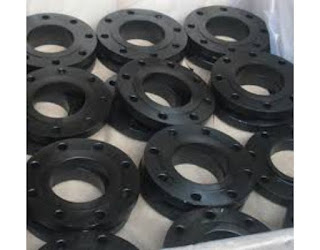What are Carbon Steel Flanges and what are their types?

Meaning Depending on the material grade, carbon steel flanges include carbon, manganese, phosphorus, sulphur, silicon, copper, nickel, chromium, molybdenum, and vanadium. Carbon steel pipe flanges are priced differently based on the material grade. Quality Forge & Fittings manufactures flanges of various kinds and material grades. Various Types Of Flanges CARBON STEEL SLIP ON FLANGES: In essence, CARBON STEEL SLIP-ON FLANGES are rings that are fitted over the pipe end, with the flange face extending far enough to allow for the application of a weld bead on the inside diameter. Also soldered to the back of the slip-on flange is the OD. Weld neck flanges are more difficult to align, but slip on flanges cost less to make out of material. CARBON STEEL WELD NECK FLANGES: A weld neck flange, also known as a tapered hub flange or a high-hub flange, can transfer stress to the pipes, ensuring a reduction in the concentration of high stress at the flange's bottom. There are two types
.jpg)